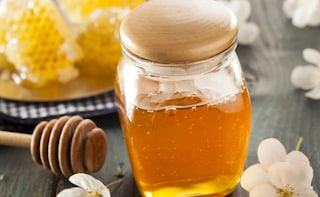Honey can be a wonderful alternative to your refined sugar which is just a source of empty calories. This lovely ingredient made by nature can not only sweeten your life but it is also abundant in minerals, nutrients and living enzymes. If you want to enjoy the benefits of using honey, you must consider its purity before buying. The biggest problem with honey is its quality. It can be quite a challenge to find good, pure honey. Like many other food commodities, adulteration is common. It is easy to cheat you as commercial honey can often be mixed with glucose solution, high fructose corn syrup and other ingredients you may not even know about. Sometimes, when you open the jar of honey and hear a little 'pop' sound that could signal that the honey has been adulterated as some fermentation process may have take place inside it.
3. The Flame TestYou may have not known this, but pure honey is inflammable. Although, we'll request to you observe utmost caution while performing this test and do it at your own risk. Take a dry matchstick and dip it in honey. Strike the matchstick against the matchbox. If it lights, your honey is pure. If it doesn't light, it may be adulterated and may also contain some amount of moisture added while contamination. 4. Use vinegar
Mix a tablespoon of honey, some water and 2-3 drops of vinegar essence together. If this mixture foams up, there's a very high chance that your honey may be adulterated.(Also read: 11 Amazing Benefits of Honey)
5. The Heat TestIf you heat pure honey, it will caramelise quickly and not become foamy. But, in case of impure honey it may not caramelise and become bubbly on heating. A lot of the differences between pure and adulterated honey can also be identified just with the naked eye by examining its physical properties. Pure honey is dense and trickles only into a stream. It has a soft texture, will never separate into layers and offers a distinct sweet aroma. Raw honey, which is honey in its purest form, often leaves a slight tingling feeling or a mild burning sensation in your throat when consumed.
Advertisement
3. The Flame TestYou may have not known this, but pure honey is inflammable. Although, we'll request to you observe utmost caution while performing this test and do it at your own risk. Take a dry matchstick and dip it in honey. Strike the matchstick against the matchbox. If it lights, your honey is pure. If it doesn't light, it may be adulterated and may also contain some amount of moisture added while contamination. 4. Use vinegar
Mix a tablespoon of honey, some water and 2-3 drops of vinegar essence together. If this mixture foams up, there's a very high chance that your honey may be adulterated.
Advertisement
5. The Heat TestIf you heat pure honey, it will caramelise quickly and not become foamy. But, in case of impure honey it may not caramelise and become bubbly on heating. A lot of the differences between pure and adulterated honey can also be identified just with the naked eye by examining its physical properties. Pure honey is dense and trickles only into a stream. It has a soft texture, will never separate into layers and offers a distinct sweet aroma. Raw honey, which is honey in its purest form, often leaves a slight tingling feeling or a mild burning sensation in your throat when consumed.
For the latest food news, health tips and recipes, like us on Facebook or follow us on Twitter and YouTube.
Advertisement
Tags:
